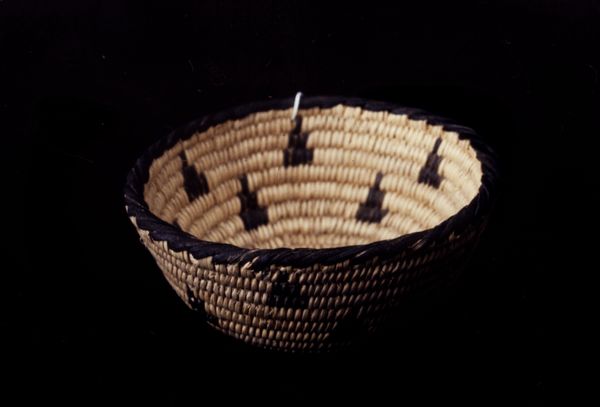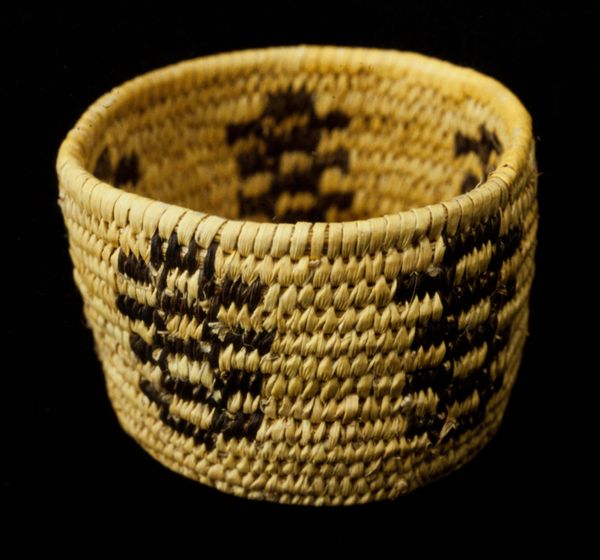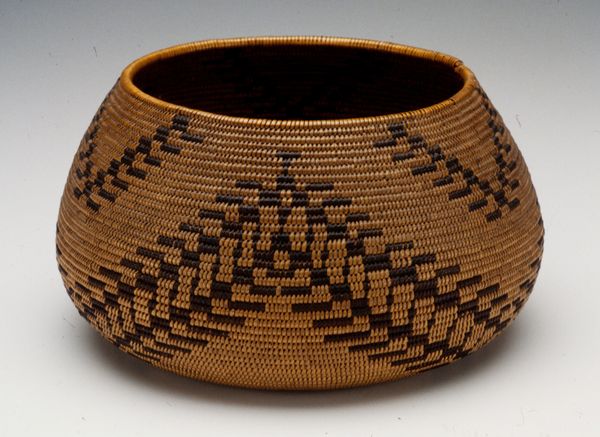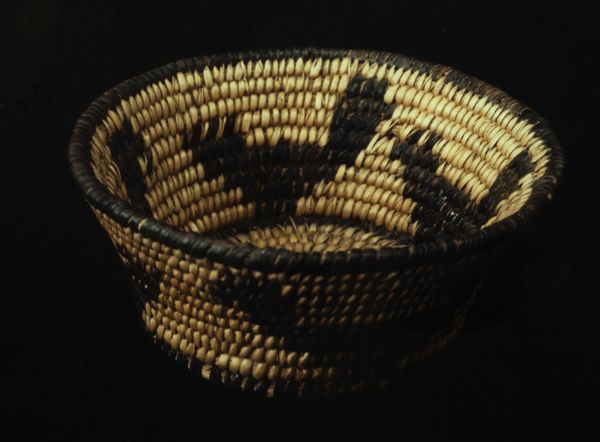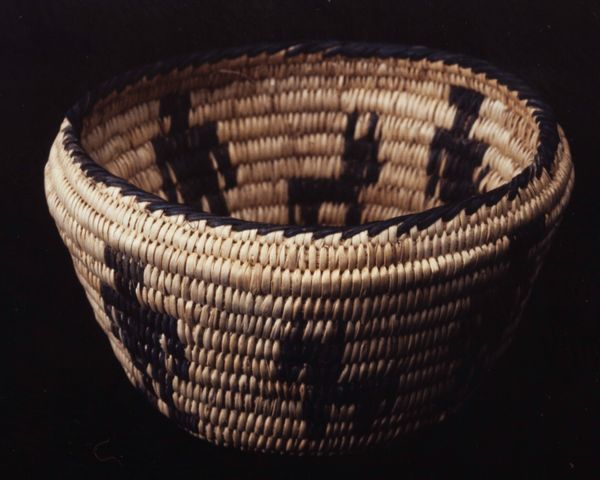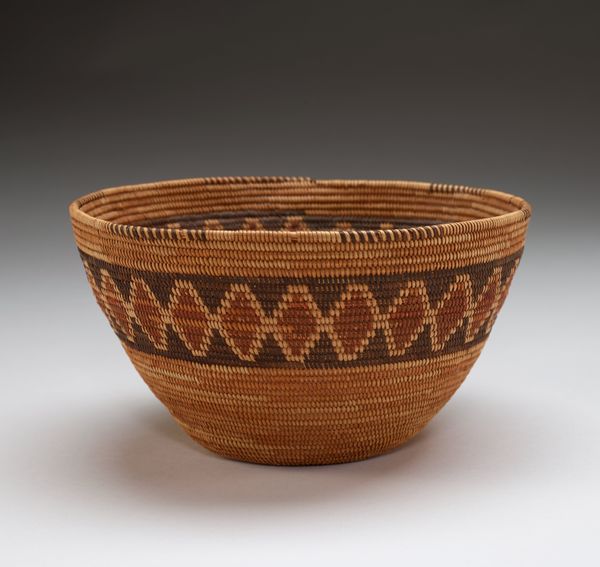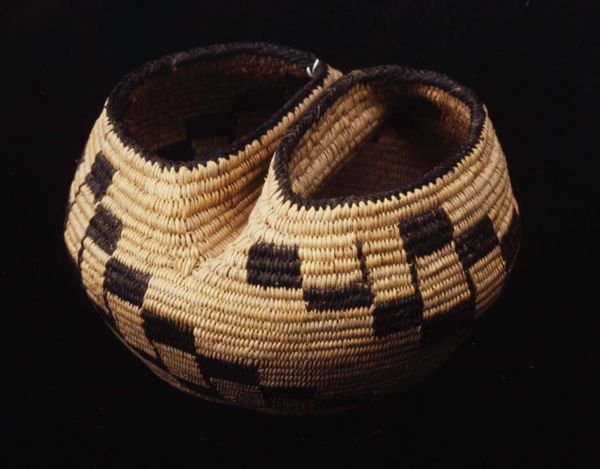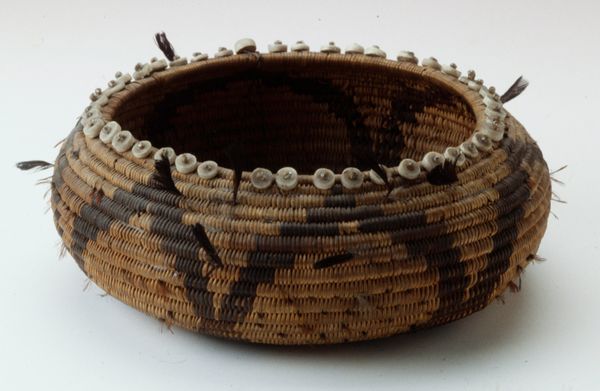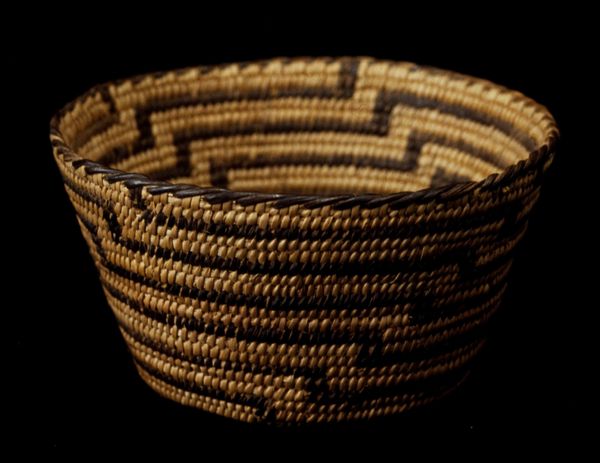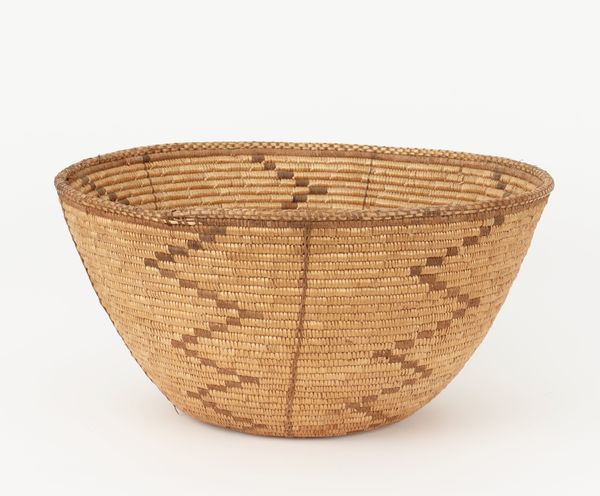
fibre-art, weaving, textile
#
fibre-art
#
weaving
#
textile
#
stoneware
#
indigenous-americas
Dimensions: 3 5/8 x 6 5/8 x 6 5/8 in. (9.2 x 16.8 x 16.8 cm)
Copyright: Public Domain
Curator: Here we have a stunning basket, originating from the Pit River peoples sometime in the 19th or early 20th century. You can see it beautifully preserved here at the Minneapolis Institute of Art. Editor: My immediate impression is one of intricate detail, a landscape in miniature. There's an earthiness, a real connection to the materials. I'm curious about the hands that created it, the time it took. Curator: Well, these baskets are woven meticulously, employing techniques passed down through generations. Consider how they acted as essential tools, but also embodied cultural narratives and symbolic meaning. Editor: Absolutely. We need to view this beyond just a "craft object". What statements are woven into the design? What’s being said about gender roles within Pit River society by the act of creating these pieces, often by women? Is the decorative art here a reflection of an environment under threat? Curator: Exactly! It highlights the tension between utilitarian object and artwork. And if you examine it within a broader context, this piece exemplifies resistance through artistry. Indigenous communities have often found ways to maintain cultural identity in the face of enormous external pressure. Editor: This isn't just pretty stitching. The brown designs on this light background could evoke patterns in nature – water, branches perhaps. The work becomes a cultural text, actively resisting cultural erasure, an emblem of resilience against external forces. Curator: I agree entirely. Its existence within the walls of an institution like this museum raises the question of display and ownership. Are we honoring the culture, or appropriating it? Editor: It’s a critical point. Let's keep examining art like this basket – looking closely and contextually. It allows us a glimpse into the dynamic and diverse world of Indigenous art and resistance. Curator: And hopefully, fostering dialogue around historical and ongoing legacies, ensuring respect and appreciation for these traditions.
Comments
No comments
Be the first to comment and join the conversation on the ultimate creative platform.
